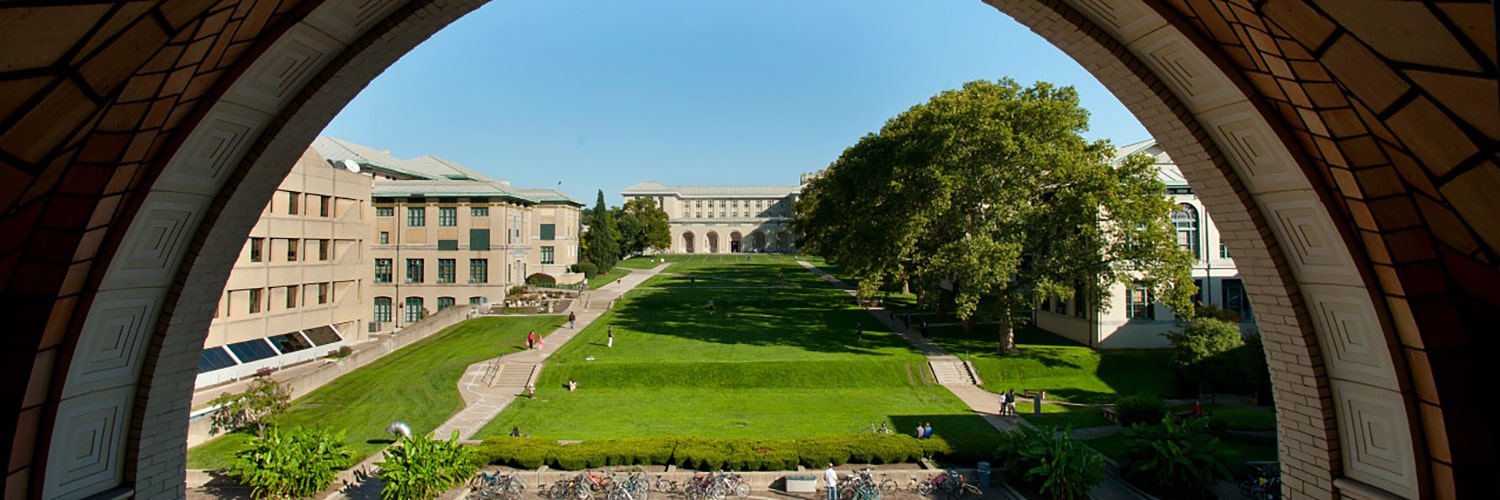
Blockchain in Healthcare: A Match Made in Digital Heaven? Let's dive straight into the magic of blockchain and healthcare. Picture this: a world where your medical records are securely stored and easily accessible wherever you are. No more filling out endless forms with the same information or waiting for days as your records are transferred between doctors. Blockchain technology is enabling healthcare systems around the globe to improve accessibility and security of patient data. Imagine all your medical history at your fingertips but protected like a digital vault only you and those you trust can unlock. This not only saves time but enhances patient care by providing physicians with crucial information when it's needed most.
The Education Sector: From Painstaking to Pioneering Who knew blockchain would crash the education scene with such zest! Accrediting institutions and managing student records have notoriously been cumbersome systems plagued by inefficiencies. Blockchain simplifies this by offering verifiable, tamper-proof certificates and records. Picture yourself showcasing your degrees with just a click, and employers verifying them in seconds. And it doesn't stop there; it's creating new avenues in learning through decentralized, peer-to-peer learning platforms where knowledge knows no geographical boundaries. All of this ensures a more seamless and efficient educational journey for students and institutions alike.
Supply Chain's Modern Makeover If you've ever wondered how that avocado got to your kitchen, supply chains are where blockchain is really shaking things up. Picture a streamlined process—each step tracked immutably from farm to table. This transparency ensures both authenticity and efficiency. Companies can now quickly trace product origins and verify quality, reducing fraud and waste. Moreover, this allows consumers to make more informed choices about what they buy. Blockchain provides that essential piece of mind that yes, your products really did come from where they claim, and in the manner described.
Real Estate Reimagined: Goodbye Paper, Hello Efficiency Real estate transactions have traditionally been anything but straightforward, entangled in heaps of paperwork, delays, and costs. Enter blockchain, and suddenly buying or selling property might just be as simple as transferring Bitcoin. By securely recording ownership data and facilitating quicker transfers, blockchain reduces the potential for fraudulent activity. Plus, the smart contracts powered by blockchain ensure terms are met efficiently, potentially reducing transaction costs and the need for intermediaries. So whether it's your first home or your tenth investment property, the future of real estate looks not just high-tech but also refreshingly fast and reliable
The Entertainment Industry's Digital Renaissance Last but certainly not least, the entertainment industry is experiencing its own blockchain-fueled renaissance. Ever wonder how artists actually get paid for their work in streaming services? Blockchain offers a way to create transparent, fair systems where creators can track royalties and ensure they receive fair compensation. It also paves the way for digital distribution and ownership verification, which can help curb piracy and ensure artists maintain control over their creations. Whether it's music, film, or even gaming, blockchain is enabling creatives to share and sell their work in a decentralized, secure space, opening up a world of possibilities for creators and fans alike.

Why it matters Yesterday’s announcement that Linda McMahon is President-elect Donald Trump’s pick to lead the Department of Education ushers in a new era for universities and colleges. This signals a sharp pivot toward decentralization and pro-business policies, and it's expected that McMahon’s leadership will focus on dismantling traditional federal education structures, expanding school choice, and aligning education priorities with a business-first agenda. Higher education faces funding uncertainties, new accountability pressures, and the need to demonstrate its relevance in supporting economic growth.
The Big Picture McMahon’s appointment reflects Trump’s broader strategy to reframe education policy in a way that prioritizes state control, entrepreneurship, and conservative cultural values. This will likely have significant consequences for higher education, including:
Decentralization: Shifting control of education policy and funding to the states.
School Choice Expansion: Redirecting public funds to private, religious, and homeschooling options.
Economic Alignment: Pressuring institutions to support industry, small business, and workforce development through research, partnerships, and entrepreneurship/startup programs.
Cultural Shifts: Rolling back policies on diversity, equity, and inclusion while emphasizing “patriotic” education.
What’s at Stake Federal Funding Cuts: Threat: Research funding, Pell Grants, and other federal supports may face cuts.
Reality Check: Congressional approval is required to eliminate funding streams like Title I, making complete federal withdrawal unlikely but changes and funding disruptions possible.
Policy Shifts: Threat: Federal oversight will likely weaken, and policies favoring vocational and workforce-aligned education will likely put increased pressure on programs such as liberal arts. Universities will also likely face increasing pressure to align with ideological goals, such as restricting DEI (diversity, equity, and inclusion) initiatives. The new administration could wield considerable control over the school accreditation process, which has been seen by some to force ideological changes on campuses. There has been a movement to decentralize accreditation authority, reduce federal oversight, and align educational standards with conservative values. According to the Council for Higher Education, many of the ideas put forward focus on empowering states to authorize accrediting agencies and even serve as accreditors themselves, shifting control from federal to state governments.
Action: Institutions must better identify their options amidst a rapidly evolving agenda at both the state and federal levels, develop strategies and secure the resources necessary. For instance, there are calls to prohibit accreditors from requiring institutions to implement Diversity, Equity, and Inclusion (DEI) policies. Institutions also need to understand what the implications of a more diverse accreditation landscape could be, with standards varying significantly across states, potentially affecting the uniformity and transferability of academic credentials nationwide.
Reputational Risks: Concern: Growing public skepticism toward higher education undermines enrolment and support.
Impact: Conservative narratives favoring alternatives like apprenticeships and other programs that support the economy and job growth will likely gain traction.
Preserving Institutional Independence: Pressure: Universities face increased scrutiny of their course curriculum and research priorities that may be deemed ideologically contentious.
Opportunity: Institutions must tangibly demonstrate their value to society. The more they can do to break down barriers between “town and gown” and counter the narrative that paints them as too expensive, elitist, and out of touch.
Demonstrating Economic Impact: Need: Universities must showcase their role in driving economic growth through research, commercialization, and support for small businesses and entrepreneurs.
Opportunity: Institutions should communicate their relevance in relatable ways that engage with businesses, emphasizing tangible contributions to research innovation and job creation as a positive return on investment that can be messaged to taxpayers.
Key Questions for Higher Ed Leaders Funding: How can we diversify revenue streams and reduce reliance on federal support?
Advocacy: How should universities engage state and federal leaders to protect their interests?
Reputation: How can higher education rebuild public trust and counter skepticism?
Relevance: How do we better communicate the value of university research and its role in supporting a pro-business agenda?
Adaptation: Can institutions innovate by expanding industry partnerships, online education, and workforce-aligned programs?
Implications of Project 2025 Project 2025 is a comprehensive initiative spearheaded by the Heritage Foundation, a conservative think tank, aiming to reshape the U.S. federal government through a conservative lens. Launched in April 2023, it serves as a strategic blueprint for a potential conservative administration, detailing policy proposals, personnel strategies, training programs, and a 180-day action plan.
Analysis from the Brookings Institution states that "many proposals in Project 2025 would require an unlikely degree of cooperation from Congress, though others could be enacted unilaterally by a second Trump administration.” While we don’t know the full extent to which Project 2025 will be implemented, its agenda seeks to reshape federal agencies, including the Department of Education, with a significant impact on the sector. Key areas of focus include:
Title I and Student Aid Proposals to give parents more control over federal funds could deprioritize public education.
Tax Credits for School Choice Incentives to support private school tuition may shift K-12 pipelines, impacting university enrolment.
Economic Realignment Universities will need to align with business priorities, emphasizing innovation, commercialization, and job creation.
Diversity Equity & Inclusion Project 2025 explicitly calls for reducing federal spending on what it deems unnecessary or politicized initiatives, and DEI programs are likely to fall under this categorization. This could have wide-ranging impacts, including changes to school ranking systems that have a DEI component. Ranking bodies such as US News & World Report may need to adjust their methodologies to account for changes in diversity initiatives and data availability. With potential reductions in diversity-related data, rankings might place greater emphasis on other factors such as academic performance, faculty qualifications, and post-graduate outcomes.
This also could extend to endowments, which direct funding toward diversity programs through scholarships and fellowships. For institutions that rely heavily on DEI as a cornerstone of their fundraising and donor relations strategies, they may experience reduced donor enthusiasm, particularly from philanthropic organizations or alumni committed to these causes.
Regulatory Rollbacks There is the potential for significant changes to Title IX protections and federal loan forgiveness programs, creating legal and financial uncertainty.
What Universities Can Do Now: Secure Funding Build relationships with private donors, businesses, and industry partners. Strengthen advocacy efforts at the state level to safeguard funding & other resources. Adopt proactive strategies to mitigate potential policy impacts, such as diversifying revenue sources, engaging donors with aligned government priorities, and ensuring compliance with evolving regulations. Reinforce Public Trust Explain complex topics in accessible ways to help the public and policymakers make informed decisions. Help promote and support faculty who can serve as credible sources for the media, countering misinformation and fostering informed dialogue. Strengthen community connections with your experts through public speaking engagements, workshops, and local events. Position the university as a hub for knowledge and innovation that benefits the community. Capitalize on the reach and influence of alumni. Highlight their successes to show how they benefitted from educational programs and research. Position them as important role models and advocates in the community who are contributing to economic growth. Demonstrate Relevance Showcase faculty and their research breakthroughs. Demonstrate how their work benefits industries, supports entrepreneurship and addresses societal challenges. Speak to real-world outcomes in health, technology, the environment, and more. Use accessible language to connect with policymakers, business leaders and taxpayers. Strengthen Advocacy: Partner with peer institutions to shape policy discussions. Position universities and colleges as vital contributors to a pro-business agenda. Innovate: Expand stackable credentials and micro-credential programs that are aligned with private and public sector requirements and emerging skills-based models. Look at new online education options. Embrace partnerships that connect academic research to real-world economic impact. Universities must deliver a more compelling, data-driven, yet humanized story about their institution’s contributions, fostering stronger relationships with government, the private sector, and taxpayers. What's Next This new era will most certainly challenge higher education to rethink its approach to funding, policy, and public engagement. For all institutions, both public and private, there is no place to hide. As they step into the ring, Higher Education leaders will need lots of support as they look to forge new paths for research, teaching, and community service while engaging their stakeholders in ways that more powerfully communicate their vital contributions to society.
The bell has rung—are you ready?

Afghanistan has been at the center of international focus since 2001, enduring decades of conflict, social change, and efforts toward rebuilding.
This topic remains significant as the world reflects on the lasting impact of the Afghanistan war, the country's evolving human rights landscape, and the enduring resilience of its people. For the public, understanding Afghanistan's history and current situation is essential to grasp the broader issues of international policy, humanitarian needs, and global security.
This subject also highlights the importance of accountability and the role of the international community. Key story angles that may interest a broad audience include:
The impact of foreign intervention on Afghan society: Exploring how two decades of international involvement have reshaped the country politically, economically, and socially. Human rights challenges and progress: Analyzing the state of women’s and minority rights, including access to education and healthcare under various regimes. Refugee crises and displacement: Examining the large-scale displacement of Afghans over the years and the humanitarian response by neighboring and Western nations. The resilience of Afghan culture and identity: Highlighting how art, music, and traditions have survived despite conflict, and how cultural preservation remains vital to Afghan communities. The future of Afghanistan’s youth: Discussing the aspirations and challenges facing a generation born into conflict, and the role of education and innovation. The international community’s role and response: Assessing current global engagement, diplomatic efforts, and the responsibilities of the U.S. and allied countries toward Afghanistan. Connect with an expert about the History of Conflict in Afghanistan:
To search our full list of experts visit www.expertfile.com





